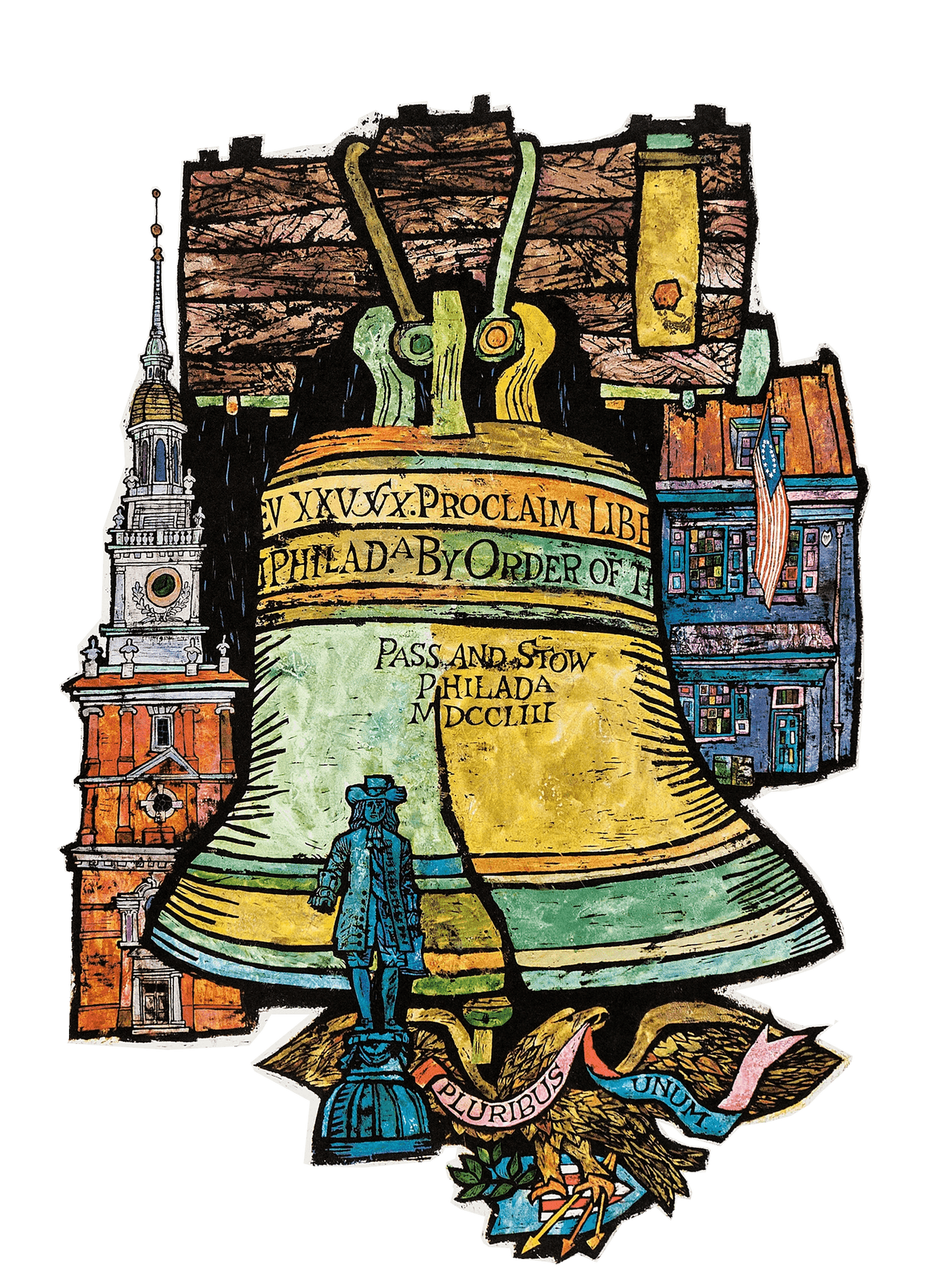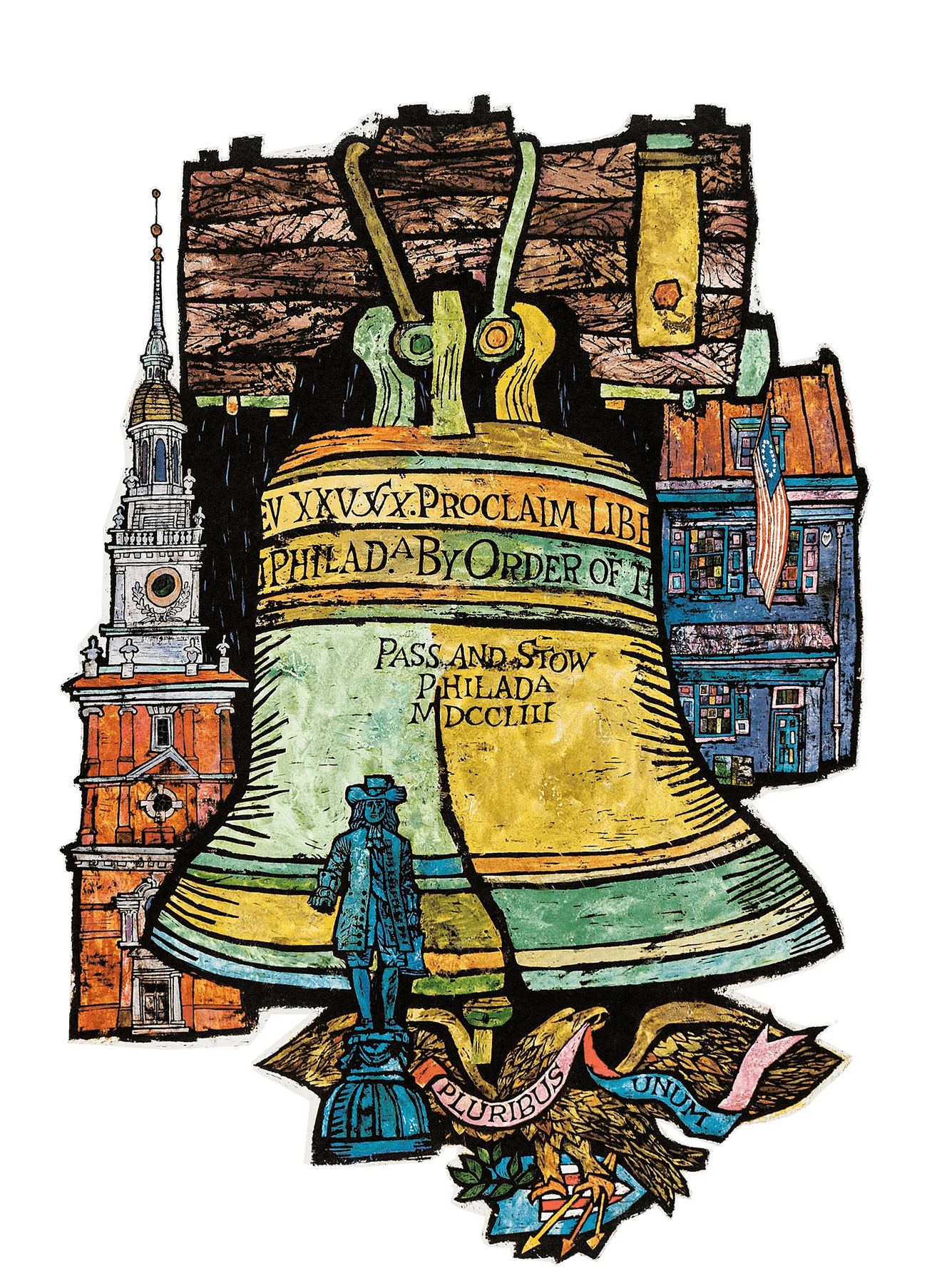To Heal America, Take the Liberty Bell on Tour
America’s iconic symbol was once a celebrity. It’s time for a comeback.




Lady Gaga, Green Day, Celine Dion, and Guns N’ Roses are back on tour this summer. Hey, hey, even the Monkees are launching a farewell jaunt. But this July 4, America’s biblically inspired greatest draw ever should take another loop across the country.
The Liberty Bell should go back on tour.
The Bell’s first road trip in over 100 years would mark a powerful effort to heal our nation’s fractures. While despite popular myth, it does not appear that it was rung on July 4, 1776, to mark the adoption of the Declaration of Independence, the bell, inscribed with a verse from the Hebrew Bible, has long galvanized countless Americans, bridging racial, social, and political fissures.
Between 1885 and 1904, the bell went on six trips to capacity crowds, drawing onlookers from across the widest divides. In 1885, it headed to the World’s Industrial and Cotton Centennial Exposition in New Orleans. There, the trip’s organizers made it a point to ask Jefferson Davis, the former president of the Confederacy, to pay homage to the bell in a show of national unity. After all, as the organizers put it, the bell was “so generously loaned to us by the City of Brotherly Love.”
Davis obliged. Addressing the crowd, and the bell, he exclaimed, “I think the time has come when reason should be substituted for passion and when men who have fought in support of their honest convictions, shall be able and willing to do justice to each other … Glorious old Bell, the son of a revolutionary soldier bows in reverence to you, worn by time, but increasing in sacred memories.”
Roughly two decades earlier, Frederick Douglass invoked the bell in his remarks to the Southern Loyalists’ Convention in Philadelphia. “I ask you,” he implored attendees, “to adopt the principles proclaimed by yourselves, by your revolutionary fathers, and by the old bell in Independence Hall.”
Two million people viewed the Liberty Bell during a 1902 trip to Charleston, South Carolina, as it passed through Pennsylvania, Virginia, North Carolina, and Georgia. Other treks, each of which drew millions, included the World’s Fair in Chicago and the Louisiana Purchase Exposition.
Growing concern by the public and metallurgical engineers over the bell’s fragility was thought to have put an end to its touring. But pleading by Mayor Jim Rolph of San Francisco, the petitioning of hundreds of thousands of California children, and William Randolph Hearst’s endorsement led to what amounted to a 10,000-mile farewell tour from Philadelphia to the West Coast.
A quarter of the U.S. population at the time came to view the bell on this journey in 1915. While officials originally permitted only the blind to touch it, countless children kissed it along the way, while adults handed jewelry and whatever was in their pockets to guards willing to tap the bell’s surface with it, symbolically connecting their personal aspirations to America’s symbol of freedom.
Originally commissioned in 1751 by the Pennsylvania Provincial Assembly to mark the 50th, or jubilee, anniversary of William Penn’s composition of the Charter of Privileges, the bell has served as the de facto Ark of the Covenant of what Robert Bellah called America’s “civil religion.” Engraved on its surface is the King James translation of a verse from Leviticus, “Proclaim Liberty Throughout All the Land Unto All the Inhabitants thereof,” a promise of liberation from servitude and debt granted to the ancient Israelites every jubilee year. Originally referred to as the “State Bell” or the “Old Bell,” abolitionists popularized the name “Liberty Bell,” by which it has been referred to since.
Even when not on tour, the Liberty Bell has served to galvanize Americans around social justice, freedom and even health. On D-Day, it was tapped 12 times with a rubber mallet by the mayor of Philadelphia to mark a renewed sense of “Independence.” During the Cold War, it was tapped to show solidarity with the East Germans. During the Civil Rights movement, the bell was a common motif, best encapsulated in Martin Luther King Jr.’s call to “let freedom ring!” And in 1976, Muhammad Ali, controversial for his having refused to serve in the Vietnam War, celebrated the country’s bicentennial by recording an album meant to inspire America’s children to take better care of their teeth. The album, titled Ali and His Gang Vs. Mr. Tooth Decay, kicks off by the boxer asking, “Who knocked the crack in the Liberty Bell?” To which a choir responds, “Ali! Ali!”
Recent years have seen protests on behalf of the DREAM Act, in favor of gay rights, and against racism outside the bell’s current home in Independence National Historical Park.
Like the ark that led the Israelites through their desert wanderings—in front of which Moses would proclaim, “Rise up, O Lord! May your enemies be scattered, and may those who hate you flee before you!”—Americans have viewed the bell’s promise of liberty as leveling hatred and drawing us closer to both safety and societal flourishing.
Of course, the Liberty Bell’s heading back out on tour won’t solve our country’s political, legal, and social challenges. But it can serve to remind Americans of the faith in our country’s unifying symbols and biblically inspired values, which have survived eras more fractious and violent than our own. As John R. Vile writes in his encyclopedia of the bell’s legacy: “The Bell remains imperfect, and yet its silent plea for liberty continues to ring metaphorically throughout the land.”
Obeying Lady Gaga’s command to “just dance” or Monkee-ing around with ageless musical wonders will no doubt be a delight this summer. But it’s the return of an icon inspired by the world’s best seller that would give Americans the biggest reason to cheer.
Rabbi Dr. Stuart Halpern is Senior Adviser to the Provost of Yeshiva University and Deputy Director of Y.U.’s Straus Center for Torah and Western Thought. His books include The Promise of Liberty: A Passover Haggada, which examines the Exodus story’s impact on the United States, Esther in America, Gleanings: Reflections on Ruth and Proclaim Liberty Throughout the Land: The Hebrew Bible in the United States.